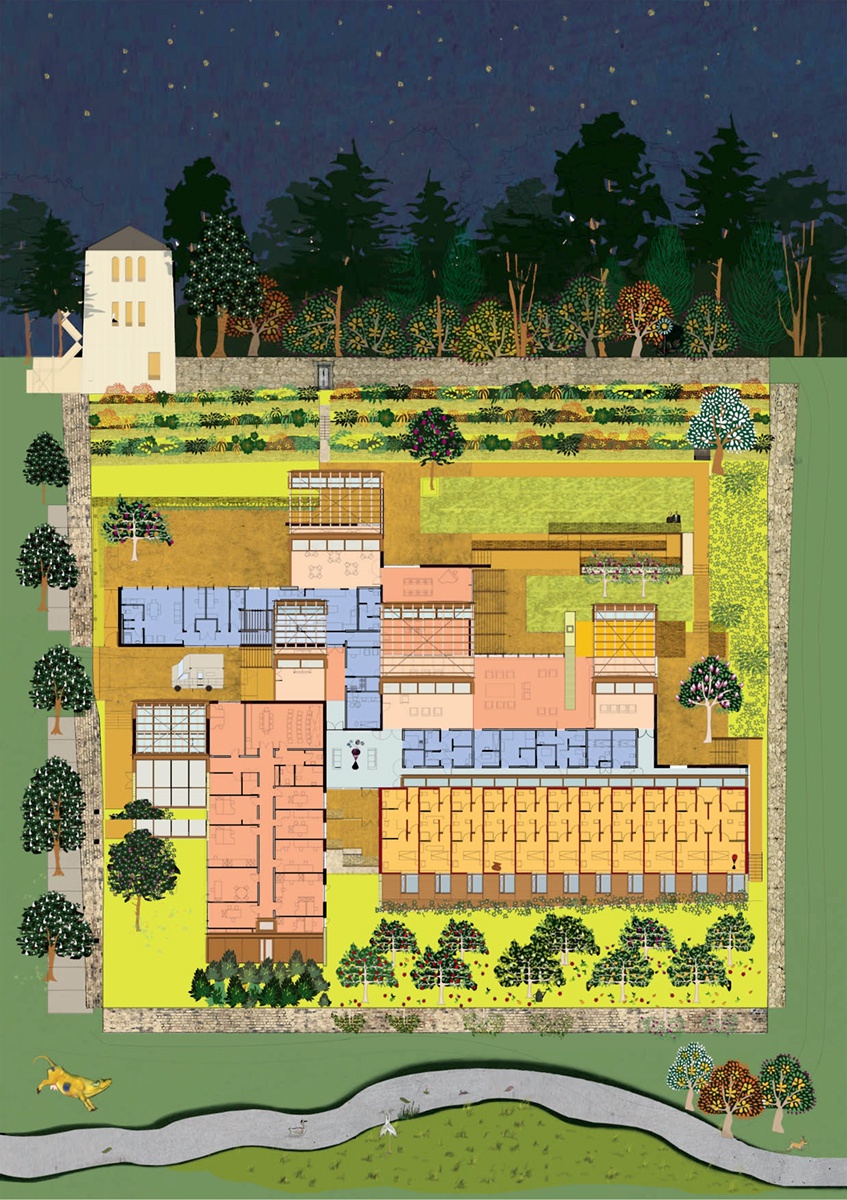The Architecture of Delight - RIAI Annual Review
Issue 2011/2012
Text Stephen Best
Images Nick Kane, Níall McLaughlin Architects
In one century irish medical institutions have the potential to initiate two paradigm shifts in the design of hospital architecture worldwide. A little over 100 years ago, Belfast’s Royal Victoria hospital tipped the balance in favour of technology in the design of medical care buildings. The institution and its architects turned their backs on Florence Nightingale’s ideals of light and air as advocated in her Notes on Hospitals (1863) and instead embraced modern engineering and deep-plan building. Both in terms of medical treatments and building mechanics they combined advanced antiseptic treatment and surgery with battery style hospital wards that boasted the world’s first air-conditioning system.
Níall Mclaughlin Architects’ project for the Alzheimer Society of Ireland now has the capacity to challenge our perceptions of modern medical care facilities again. Whereas hospital design over the past century has been driven by the ideals of efficiency, the Orchard Day-care and Respite Centre re-embraces Florence Nightingale’s notions of free access to sun and air that eschew the endless, hermetically sealed corridors of traditional hospital settings.
Universalisation and utility now supplant delight in the architecture of medical institutions, which are almost all defined around the sophistication of their latest treatment regime rather than their architecture. The result is that most facilities in Ireland are little more than an eclectic jumble of add-ons and extensions, linked together by endless fluorescent-lit corridors. Valliant attempts by the architects to humanise them, with access to pleasant outdoor space, often lie abandoned.
A single-storey pavilion in the former walled kitchen garden of a Georgian house, the Orchard Centre revives Nightingale’s ideals and civilises the medical experience. Using a palette of warm golden bricks and dark timber, it rebalances the focus towards the healing potential of good architecture and well designed environments. Its plan, a pin-wheel arrangement of radiating arms, extends out from the main gathering space, a metaphorical heart that contains a sitting room and library. It has overtones of the unbuilt Brick House by Mies van der Rohe that gives the architecture a strong domestic feel, and which embraces the dynamic interplay between garden and room.
Inside, humane details, such as built-in seating below the windows, elevate the architecture. Such details make this a building of small things, finely detailed, in which everything is close, with private views onto small, intimate gardens.
Carefully crafted architecture, easy navigation and fluidity of interweaving spaces are all found in the respite centre. They respond well to the physical and psychological needs of the patients with Alzheimer’s Disease, who often have a strong impulse to wander and regularly need reminding of where they are or where they have come from.
But it also has a larger significance. The Orchard Centre has the potential to be carried further, to be a blueprint for the 21st century. Lessons learned here could transform other medical facilities, all too often abandoned by good design. If architecture can articulate what we value in society, perhaps the design of medical buildings should focus not on iconography or efficiency but rather on delight and the human experience. This project is a timely re-evaluation of the deep-plan and the reassertion of Nightingale’s humane principles.
